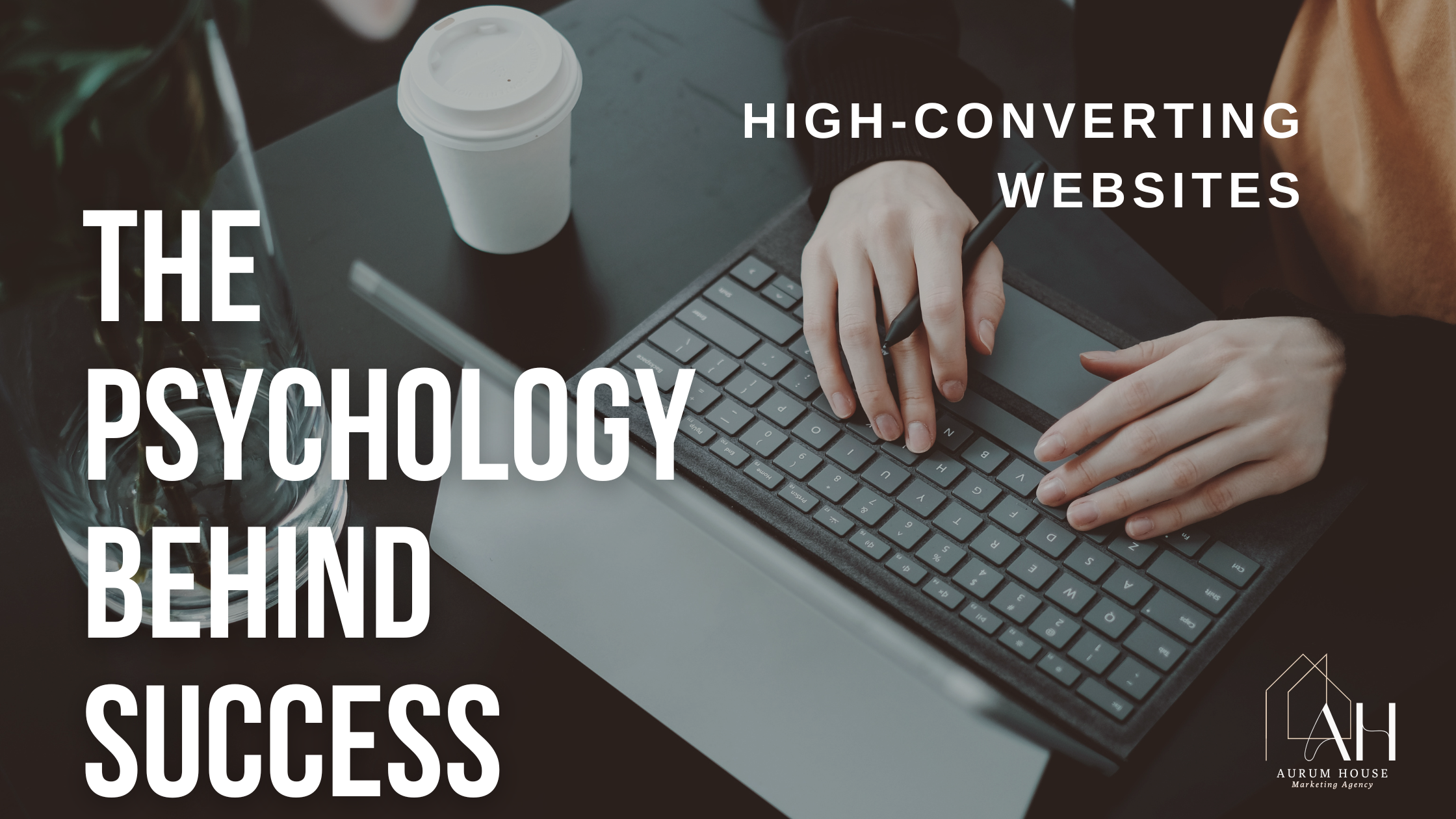The Psychology Behind
High-Converting Websites


Have you ever landed on a website and instantly felt drawn in? It could be the design, the messaging, or a limited-time offer that made you take action. That's not just good luck—it's psychology at work.
Subconscious triggers influence every decision we make online. From the colors used on a page to how choices are presented, consumer psychology plays a massive role in whether visitors stay, engage, and convert.
While technical aspects like fast loading times and mobile-friendly design are essential, real success comes from understanding what motivates users. By using psychological principles—such as the Law of Pithiness, the Cost/Benefit Analysis Principle, and Fitts' Law—you can create an experience that builds trust and drives action.
People don't visit websites just to browse aimlessly—they have a goal. Understanding user intent helps shape a site that meets their needs and increases conversions.
Have you ever seen "Only two left in stock" or "Sale ends in 3 hours"? That's scarcity at play. When people think something is running out, they're more likely to act fast. Research from Wishpond shows that urgency messaging can boost up to 83% of conversions.
We all look for reassurance before making a decision. That's why we check reviews, ask for recommendations, or look at testimonials before buying something online. Adding customer reviews, case studies, and influencer endorsements can significantly impact.
BrightLocal says 84% of consumers trust online reviews as much as personal recommendations. A well-placed testimonial could be the final push someone needs to convert.
People feel inclined to return a favor when they receive something valuable first. That's why offering free eBooks, webinars, or exclusive discounts can increase the likelihood of conversion. Bain & Company found that increasing customer retention by just 5% can boost profits by 25% to 95%. Small gestures of goodwill can pay off in significant ways.
Ever notice how stores display a higher price before showing a discounted price? That's anchoring—our brains naturally compare numbers. The deal seems even better when highlighting an original price before revealing a discount.
More options don't always lead to more sales. They often lead to decision paralysis. Simplifying choices and using clear comparisons help users feel more confident about taking action.
It takes less than a second for someone to decide if they trust your website. A clean design, fast load times, and a compelling headline make a strong first impression and engage visitors.
People first notice your headline. Use curiosity, numbers, or emotional triggers to grab attention.
Example: "Boost Your Sales with These Simple Website Tweaks"
The best call-to-action buttons stand out and make people want to click. They use strong, explicit language and sometimes create urgency.
Example: "Claim Your Free Trial Today"
The way content is arranged affects how people interact with it. Following natural reading patterns like the F-pattern and Z-pattern helps highlight key messages.
Slow sites lose customers—plain and simple. Optimize images, reduce unnecessary code, and use a Content Delivery Network (CDN) to improve speed. Faster load times improve user experience and search rankings.
People hesitate to share their information on sites that seem sketchy. Build trust by:
Neuromarketing blends neuroscience and marketing to understand how people make decisions. Applying these insights can enhance user experience and increase conversions.
Not every visitor converts on the first visit. Retargeting helps bring them back by showing personalized ads on different platforms.
Improving conversion rates doesn't always require a significant overhaul. Minor tweaks can lead to substantial results:
The best websites are constantly evolving. A/B testing lets you compare different elements to see what works best.
1. How does psychology influence website conversions?
Psychology greatly influences how users interact with a website, from emotional triggers to cognitive biases that drive decision-making.
2. How necessary is social proof?
Extremely important. Reviews, testimonials, and case studies build trust and make people more comfortable purchasing.
3. Why does emotional content perform better?
People remember how something makes them feel. Emotionally engaging content is 31% more likely to be shared and can create a stronger connection with your audience.
4. Does scarcity increase conversions?
Yes. Limited-time offers and low-stock alerts create a sense of urgency, encouraging users to act quickly.
5. What's the most essential element of a high-converting website?
Clear messaging, strong CTAs, fast load times, and a user-friendly design all contribute to higher conversions.
Consumer psychology isn't just a bonus—it's the key to building a high-converting website. Businesses can improve engagement, trust, and sales by applying these strategies. The digital landscape is competitive, but a website designed with human behavior in mind will always have the edge.